-
TrackoBit
Manage commercial vehicles with the new-age Fleet Management Software
TrackoBit -
TrackoField
Streamline your scattered workforce with Field Force Management Software
TrackoField -
Features Resources
-
Blog
Carefully curated articles to update you on industrial trends. -
White Paper
Insightful papers and analysis on essential subject matters. -
Glossary
Explore an alphabetical list of relevant industry terms. -
What’s New
Get TrackoBit & TrackoField monthly updates here. -
Case Study
Explore the cases we solved with our diverse solutions. -
Infographics
Explore key topics through visually impactful infographics.
-
About Us
Get to know TrackoBit: our team, ethos, values, and vision. -
Careers
Join the most dynamic cult of coders, creatives and changemakers. -
Tech Support
Learn about our technical support team and services in detail. -
Events
Check out the exhibitions where we left our marks and conquered. -
Contact Us
Connect with us and let us know how we can be of service.
What is the Future of Trucking Industry? (8 Upcoming Trends!)
- Author:Ayushi Nagalia
- Read Time:8 min
- Published:
- Last Update: December 13, 2024
Table of Contents
Toggle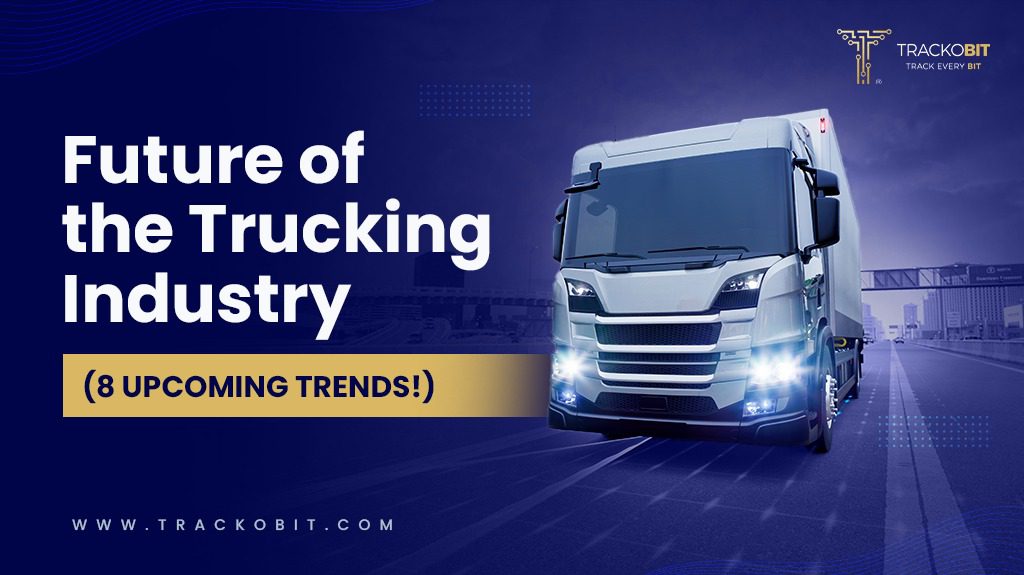
The future of trucking industry is headed towards smart, autonomous, and electric vehicles. But to what extent? Find out in the blog.
Table of Contents
Toggle
Karl Benz put the first combustion engine on a truck in the late 1800s, and the heavy-duty vehicle became the heart of the transportation industry.
Ever since there have been several revolutions in the industry.
From getting multiple fuel options to being completely powered by fleet management software – the trucking industry has come a long way, and the technology used in the trucking industry has evolved too.
But enough reminiscing! In this blog, we will talk about the future of trucking industry, and the trends you can expect in the near future.
Why Is The Trucking Industry Changing?
Change is the only constant, right?
Well, it is obvious that any industry faces constant change over time. After all, newer technologies and newer problems are bound to bring new trends. However, to truly understand those changes and leverage them, you must understand why they happen.
Here are a few factors that are propelling the trucking industry towards a different future:
- Environmental Consciousness: The trucking industry alone is responsible for about 29% of the US’s greenhouse gases. With the growing global awareness about environmental preservation, cutting down on those greenhouse gasses is crucial – and something needs to be done in the trucking industry to fix this problem.
- Increasing Road Accidents: Trucks account for over 21% of all road accidents and road fatalities. Not only is that a bad number for the public, but also for fleets, because more often than not, it is commercial trucks that are blamed for accidents, even if they weren’t to blame.
- Unbearable Road Congestion: Trucks are huge, and travelling on already-packed roads doesn’t help. Not all roads can be planned and rebuilt right away, but there can be better ways to reduce congestion by moving trucks elsewhere.
- Need for Faster Deliveries: The e-commerce industry has increased consumer expectations by multifolds. With hyperlocal deliveries, nobody wants to wait for more than 2 days to get their orders, and the trucking industry needs to step up to keep up with the pace.
- Technological Advancements: The fleet management software industry is set to grow at a CAGR of 17.9%. Therefore, it only makes sense for the trucking industry to propel towards a safer, more sustainable, and stronger future.
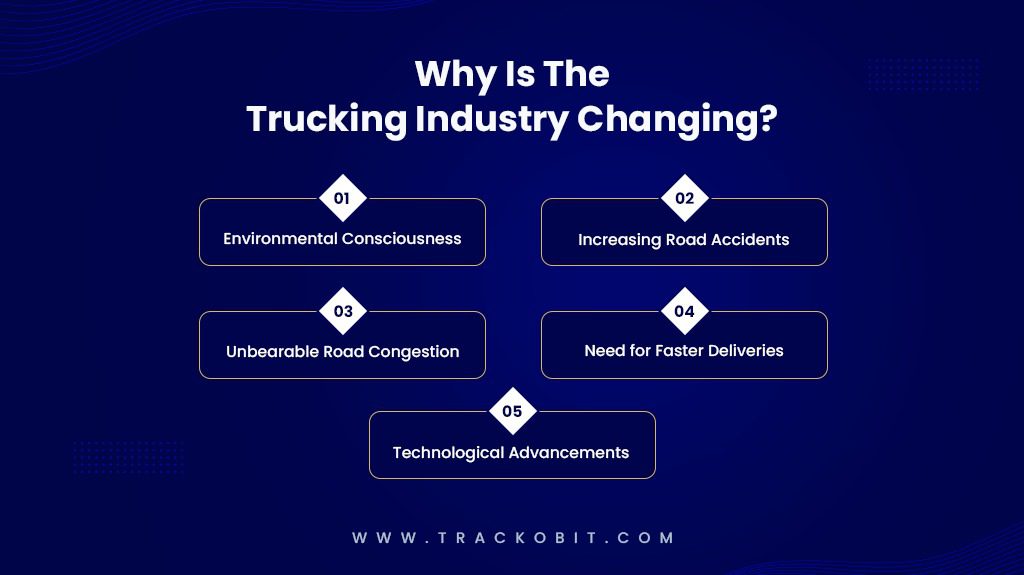
Top Trends in the Trucking Industry to Expect
After a deep trucking industry analysis, it is safe to assume that truckers are soon to see the following trends emerge. Before we start, it is fun to note that all these upcoming trends in the trucking industry are interrelated. Read below to know how!
1. Less Long-haul, More Short-haul
The e-commerce industry will make significant changes to each trip length.
Yes, long-haul is irreplaceable and will always be in the picture. But in the near future, there will be a much larger number of hubs, cutting each long trip into multiple short ones.
The e-commerce industry has nurtured the culture of shorter deliveries and faster TAT. Therefore, all hubs will be pre-stocked with consignments that will then go through the short-haul trips and ultimately, last-mile delivery systems.
In fact, well-known and fast-service companies are likely to shift their production locations to more favourable business locations.
2. Driver Shortages
The trucking industry is currently facing and will continue to face driver shortages. And the primary factor for this is the ageing workforce of truck drivers. This issue stems from the fact that most people avoid trucking for fancier desk jobs, and the average age of the typical truck driver today has swiftly reached 42.
These driver shortages will only increase as self-driving trucks become mainstream and there will not be many people looking to get into a ‘slowly dying’ business.
Several trucking industry problems cause the case of vanishing drivers. Truck drivers often work in harsh conditions and often go through a lack of sleep, low pay, poor infrastructure, etc. Therefore, the younger generation is hesitant to join the workforce.
3. Improved Driver Safety
As the trucking industry technology advances, you will see a clear improvement in driver safety. Video telematics, DMS, and ADAS are improving every passing day, enhancing drivers’ safety.
Drivers will be safeguarded on multiple grounds:
- DMS and ADAS will keep them aware and safe while driving
- Video telematics will save them from false accident allegations
- Hours of Service(HOS) monitoring will save them from work exploitation
- SOS alarms and other safety features will help them get aid on time
Driver safety will be the cornerstone of the future of trucking industry in the coming years.
4. Increasing Fuel Prices
Fuel prices will go all over the place with changing vehicle field economies. With newer alternatives for all non-renewable fuels, but their inability to immediately solve the trucking industry’s requirements, the field demand-supply chain is set to see a lot of topsy-turvy.
Since fuel is one of the largest fleet operational costs, the rising fuel prices will also have a significant impact on overall delivery and shipping costs. This in turn, will lead to higher trucking costs for the end consumer.
5. Autonomous Trucks
Autonomous or self-driving vehicles are not a thing of unreachable future. With the help of sensors, cameras, and the right fleet management software, autonomous trucks will soon be part of the best commercial fleets.
Trucking industry news indicates that prominent companies like IVECO and Plus are done with the initial testing. Some fleets have already started adopting autonomous trucks. This trend is only going to strengthen in the future with stronger sensors and more powerful real-world applications.
6. Rise of e-trucks
As expected, future trends in the trucking industry come together to address common issues. Since the oil and gas industry is going to get extremely expensive and the world is anyway tipping towards environmental consciousness – electric engines become the need of the hour! And the trucking industry has not been lagging in following.
DAF is one company that is pushing e-trucks to commercial fleets and is successfully getting there! While there are still several challenges to overcome when it comes to adopting electric trucks in commercial fleets, the future commercial fleets will definitely be full of e-trucks
7. e-Logs and Data Analysis With Fleet Management Software
According to studies, 68% of fleets already use fleet management software to keep track of their fleet business productivity. And all these fleets use e-logs and data analysis to get a comprehensive look into how each vehicle is performing in the fleet.
This figure is only going to go up as data analytics and intra- and inter-fleet connectivity become paramount to the trucking industry.
In a couple of years, when you see a trucking industry overview, you will find many productive fleets leveraging data analytics. After all, all the electronic logging ensures that you only get authentic data regarding your fleet, and the data analytics allows you to make actionable and realistic strategies!
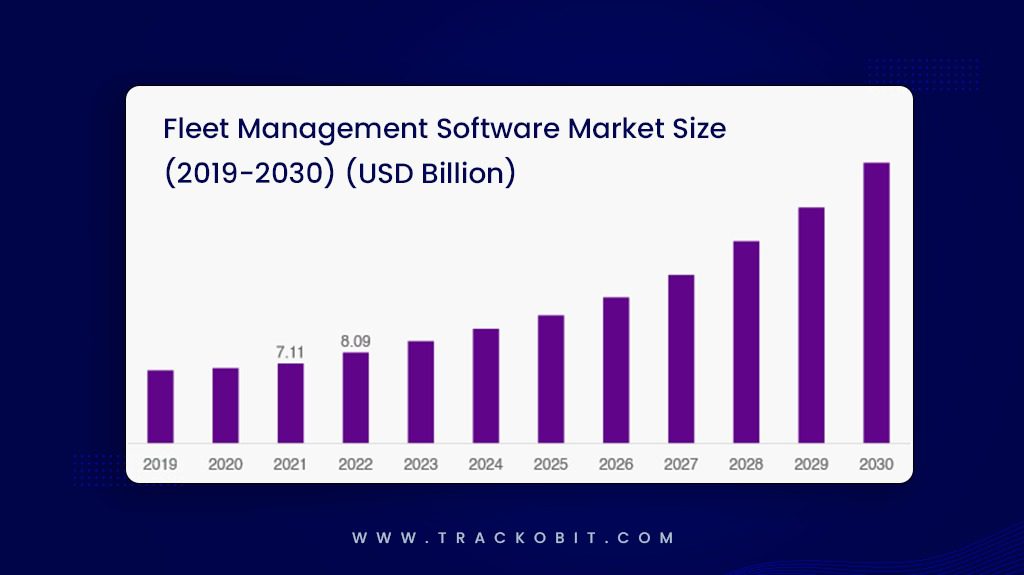
8. Connected Trucking Ecosystem
See how all traffic lights in an area are connected. That is exactly what will happen with trucking fleets. When all fleets start using fleet management software, and when all trucks’ locations are registered on the cloud, the trucking industry will be more interconnected than ever.
IoT has always been a huge part of the trucking industry, but the scene goes to a whole new level when there’s complete V2V, V2I, and V2X connectivity!
Trucking Industry Technology and Automation Will Not Drive Truckers Out of Jobs
As discussed in a previous section, one of the biggest reasons why the driving workforce is ageing is because younger drivers worry if they’ll even have a job in the coming year. And this is a valid fear.
However, all changes come slowly, and that is exactly the case with truck automation. There should not be a sudden loss of a job anytime soon. In fact, in line with all other industries and their fear of the AI boom, the trucking industry will also need expert drivers who know how to navigate these self-driving trucks.
Until commercial trucks reach level 4 or 5 of automation – which is not going to happen for many years to come – there will always be a need for a human driver in the cabin. The drivers behind the wheel might not have to control everything as extensively, but their role as a supervisor will be paramount.
So, no, the trucking industry technology and automation will not drive truckers out of their jobs. Instead, they will make their jobs easier, more comfortable, and much safer!
Why Will The Trucking Industry Not Go All Green Soon?
From a sucker for the future perspective – the future will BE all green very soon.
But from a more realistic lens, shifting towards an alternative field will not be as simple as that.
While electric trucks might seem like a great save – because they massively cut down on fuel costs, they still are a huge monetary and opportunity liability for fleet managers.
But let us explain first. Most diesel trucks have a run range of over 1,500 kilometres. On the other hand, an electric semi-truck by Tesla has a run range of hardly 500-800 kilometres.
This means each truck will have to stop many more times than ICE trucks to recharge batteries. And to make things worse, the trucking industry in India is not yet ready for a lot of e-trucks. Therefore, not only will trucks have to make more stops, but they’ll also have to wait longer at each stop. And this combination will come in the way of the trucking industry having to speed up to fulfil fast deliveries.
While environmentally-conscious fleet managers with lots of funds can make the transition with a couple of adjustments to their supply chain and strategy, it is not possible for everyone just yet.
Yes, green trucking is possible. And we will see a lot of e-trucks in commercial fleets. However, the transition for the trucking industry to go completely green will take a lot of time.
Leverage The Future of Trucking Industry With TrackoBit!
Any trucking industry analysis will tell you that the major reason for the upcoming trends is the growing technological support and advancement. Therefore, it only makes sense for your fleet to be managed by the best fleet management software out there, right?
So, now is the chance to make the best use of trucking industry technology and get your hands on TrackoBit, your #1 truck fleet management software. With it, you can ride the wave of all trends to follow in the industry seamlessly!
Ayushi Nagalia is a Senior Content Specialist at TrackoBit. She is a marketing maverick with a lush background in literature. With years of experience crafting content for various niches, she speciali... Read More
Related Blogs
-

How to Use Driver Behavior Reports as a Sales Hook to Close Big Fleets
Tithi Agarwal October 16, 2025TrackoBit’s driver behavior reports empower fleet providers to win big contracts by showcasing safety, efficiency, and measurable ROI.
-
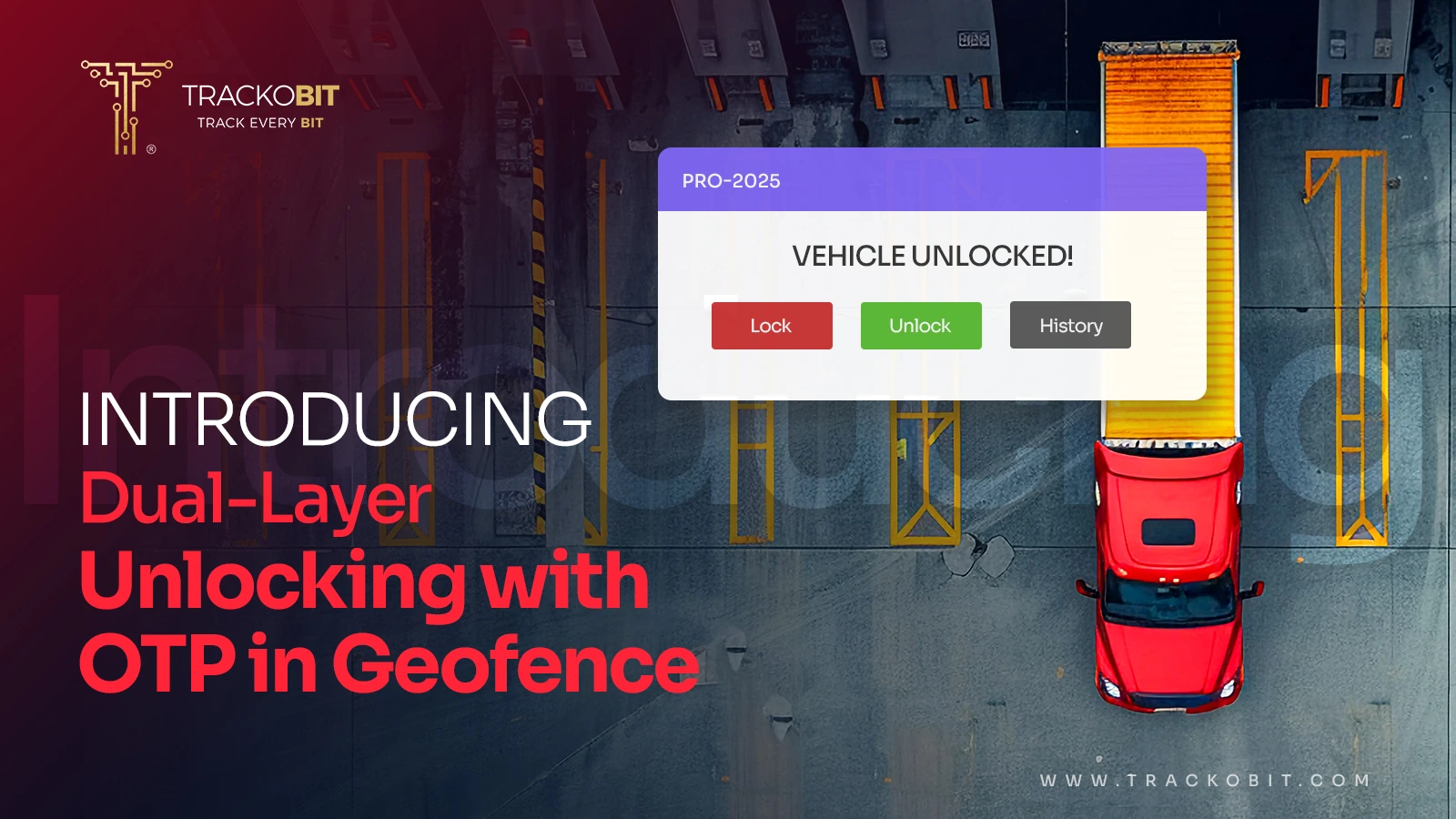
TrackoBit’s Unlocking in Geofence with OTP: Elevating Cargo Protection
Tithi Agarwal September 16, 2025TrackoBit’s latest feature – Unlocking in Geofence with OTP lets you lock out theft and unlock cargo only at the…
-
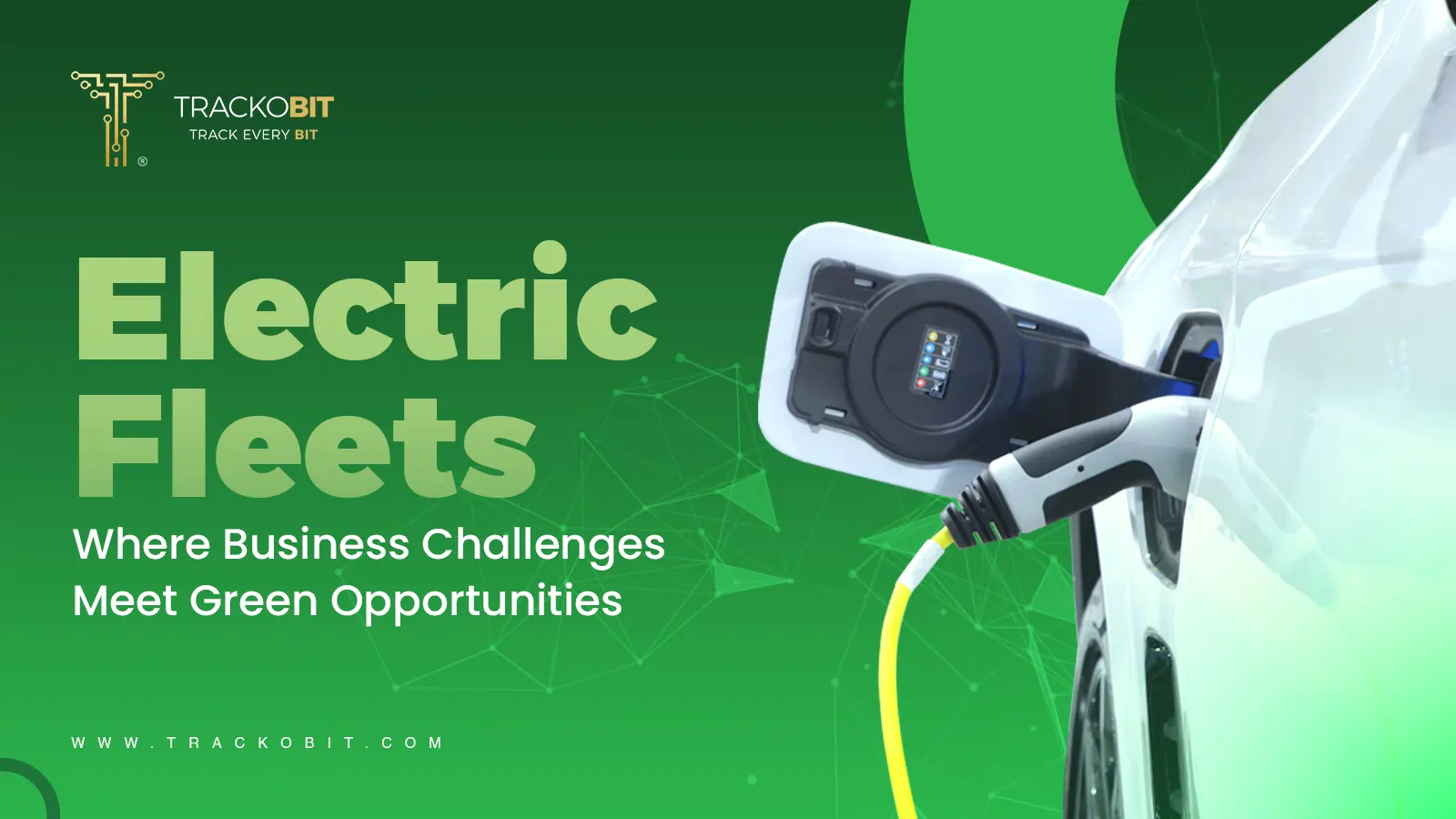
The Rise of Electric Fleets: Challenges and Opportunities for Businesses
Tithi Agarwal September 4, 2025The global fleet landscape is poised for a decade-long transformation. This change is being powered by electricity. Logistics-led businesses are…
-
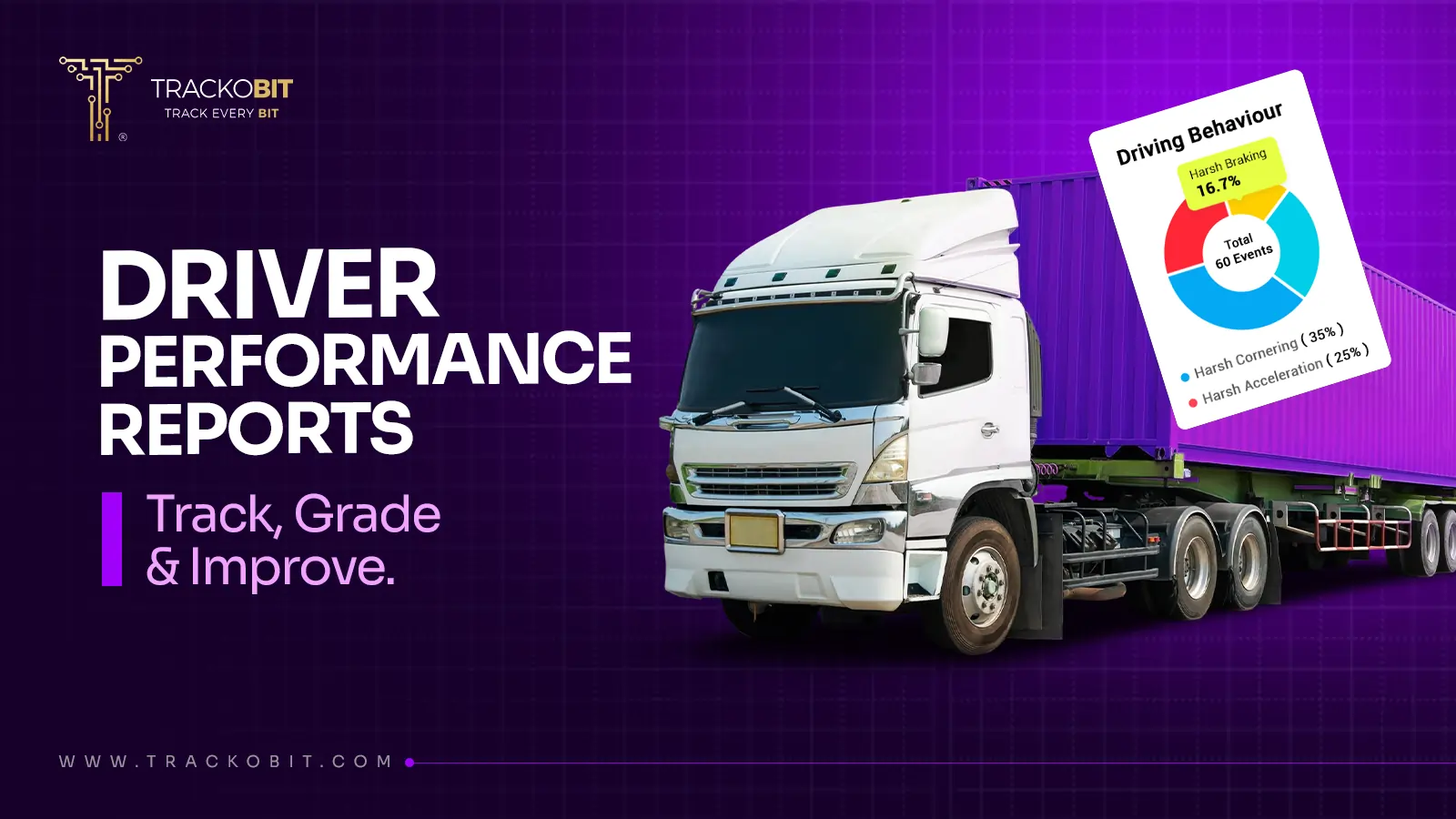
Who’s Really Behind the Wheel? Unlocking Insights with Driver Performance Reports
Tithi Agarwal August 27, 2025Identify top-performing drivers, monitor violations, and grade skills with the driver performance report. This makes fleet operations more transparent and…

Subscribe for weekly tips to optimize your fleet’s potential!
Your inbox awaits a welcome email. Stay tuned for the latest blog updates & expert insights.
"While you're here, dive into some more reads or grab quick bites from our social platforms!"Stay Updated on tech, telematics and mobility. Don't miss out on the latest in the industry.
We use cookies to enhance and personalize your browsing experience. By continuing to use our website, you agree to our Privacy Policy.


































